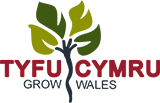Plant Health News Update
Tuesday, 10 May 2022

This update on plant health comes to you as Wales and the rest of the UK holds National Plant Health Week from 9-15th May. This is aimed at encouraging society as a whole to play its part in protecting plant health. It delivers the key messages of taking care of plants at home and in the office, buying plants from responsible sources, reporting any unusual symptoms and cleaning boots and bikes after visiting different places. Getting these messages across to your horticultural customers is crucial in maintaining biosecurity.
During that week is the International Day of Plant Health. This is to raise global awareness on how protecting plant health can help end hunger, reduce poverty, protect biodiversity and the environment, and boost economic development. The Day is a key legacy of the International Year of Plant Health and the United Nations have designated it on 12 May. The key message of the Day is that by protecting plant health we are protecting the benefits plants provide to all of us. After this will be Invasive Species Week from 16-22 May
The International Year of Plant Health in 2020/21 included the Wales Plant Health in Horticulture Conference led by Tyfu Cymru. It revolved around the themes of the prevention of pests and diseases, their diagnosis, control and mitigation.
Prevention depends upon biosecurity, particularly at national borders, regulating imports and exports. The Wales Plant Health Evidence and Advisory Group (WPHEAG) was established by Tyfu Cymru and comprises representatives of Welsh Government and APHA, and stakeholders of edible, ornamental and tree growers, trade associations, universities and scientists. Working in the Group over the last six months, the stakeholders have made contributions from Wales to the new UK Biosecurity Strategy which is due to be launched during May. They have also responded to government consultations on the frequency of border, plant inspections and the fees charged for these inspections. New regulations on border controls were due to be introduced in July 2022 when Border Control Points were to replace the Places of Destination (PoD) which are at growers’ premises. However, this change has been delayed and PoDs will continue to be used for the time being.
Also, in terms of disease prevention, WPHEAG has been engaged with the Plant Health Management Standard and looking at ways in which this may be adopted in Wales to promote high production values. One of the first steps is that Tyfu Cymru will produce an eLearning module on plant nursery hygiene and this will be a resource for new staff.
A pathogen new to the UK has been detected at multiple sites in Wales and growers are advised to look out for symptoms of Phytophthora pluvialis which are predominantly needle cast, shoot dieback and lesions on hosts such as western hemlock and Douglas fir. Pine Processionary Moth has been intercepted on tree imports coming into the UK and new regulations have been introduced on the imports of certain conifers.
In terms of pest and disease control, Tyfu Cymru is inviting participants to go on a site visit to the nurseries of Bransford Webbs. Bransford Webbs are experts on Integrated Pest and Disease Management (IPDM) in ornamental plants. You may wish to catch up on the virtual, video tour of the nursery which is available on the Tyfu Cymru Knowledge Hub along with wealth of other webinars and factsheets on IPDM for you to build your expertise.
